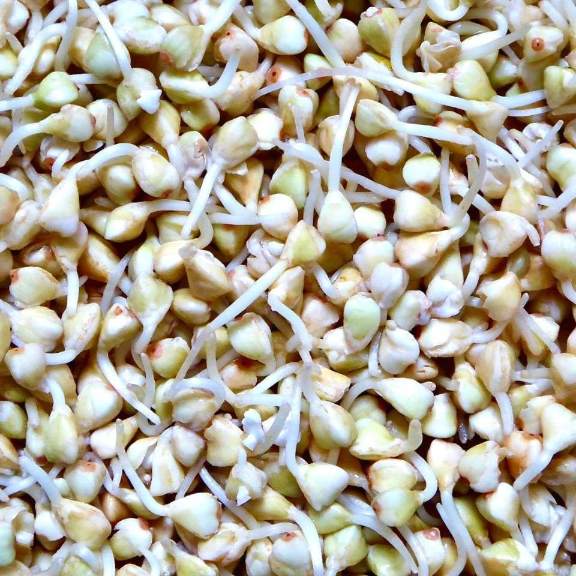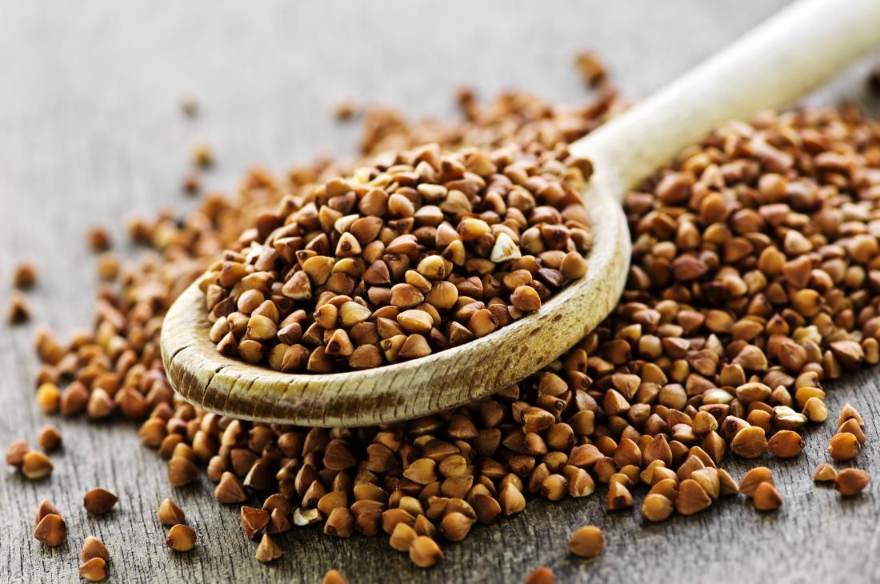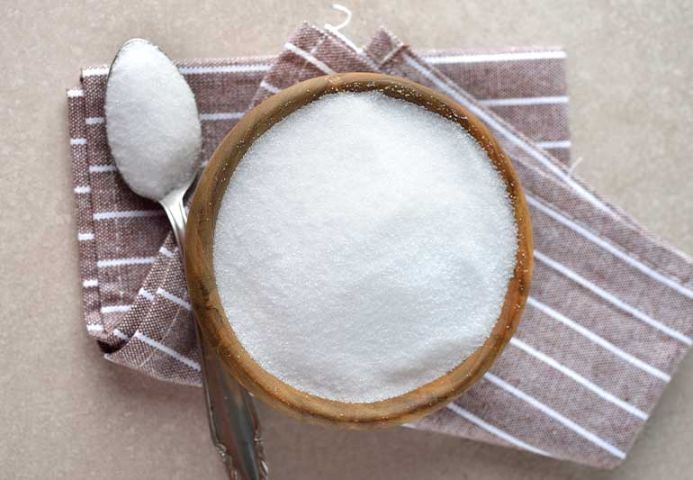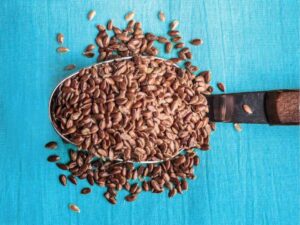The Discovery of Buckwheat
Uncovering the Origins of this Mysterious Ancient Grain
Buckwheat is an enigmatic grain with a long and fascinating history. Despite its name, it is not actually a type of wheat at all, but rather a member of the polygonaceae family, which also includes rhubarb and sorrel. This hardy and versatile crop has been cultivated for thousands of years, and has played an important role in the diets of people all around the world. But how did this ancient grain come to be discovered in the first place? The answer is a tale of mystery and intrigue that has confounded scientists and historians for centuries.
The Origins of Buckwheat: A Puzzle Yet to be Solved
The precise origins of buckwheat are shrouded in mystery, and historians and scientists have been struggling to unravel this puzzle for centuries. Some theories suggest that buckwheat may have originated in Central Asia, where it was first domesticated around 6,000 years ago. Others believe that it may have been independently domesticated in other regions, such as China, Tibet, or the Himalayas.
One of the perplexing things about buckwheat is that it is not mentioned in any written records or ancient texts until relatively recently. For example, while wheat, barley, and other grains have been mentioned in ancient Sumerian, Egyptian, and Greek texts dating back thousands of years, there is no mention of buckwheat until the Middle Ages.
The Buckwheat Mystery: Clues and Speculations
Despite the lack of written records, there are some clues and speculations that may shed light on the mystery of buckwheat’s origins. One theory is that buckwheat may have been discovered accidentally, as a result of people gathering wild plants and seeds for food. This is supported by the fact that wild buckwheat plants can still be found growing in many parts of the world today.
Another theory is that buckwheat may have been domesticated as a result of people observing how certain animals, such as birds or rodents, would eat the seeds and spread them around. This could have led people to realize the potential of the plant as a food source and to begin cultivating it themselves.
The Spread of Buckwheat: A Global Crop with Many Names
Once buckwheat was discovered and domesticated, it began to spread rapidly across the world. It is known by many different names in different regions, such as kasha in Russia, soba in Japan, and galettes in France.
Buckwheat’s hardiness and adaptability made it well-suited to a variety of different climates and growing conditions. It thrived in places where other crops struggled, such as in mountainous regions or in poor soil. As a result, it quickly became an important staple crop for many people around the world.
Buckwheat Today: A Nutritious and Versatile Superfood
Today, buckwheat continues to be cultivated and consumed around the world. Its many nutritional benefits have made it a popular ingredient in health foods and specialty diets, such as gluten-free and vegan diets. It is rich in protein, fiber, and essential amino acids, making it a nutritious and filling food.
Buckwheat is also a versatile ingredient that can be used in a wide range of recipes, from pancakes and porridge to noodles and breads. Its unique nutty flavor and texture make it a popular ingredient in many different types of cuisine.
The Mysteries of Buckwheat: Unraveling the Puzzle
Despite our best efforts, the mystery of buckwheat’s origins and discovery remains unsolved. We may never know for sure how this fascinating ancient grain was first discovered and domesticated. However, ongoing research and new discoveries may help shed light on this perplexing puzzle.
In recent years, advances in genetic analysis and archeological techniques have led to new insights into the history of buckwheat. For example, studies have shown that different strains of buckwheat have distinct genetic markers that can help trace their origins and movement throughout history. Archeological evidence has also uncovered ancient buckwheat grains and tools used for processing them, providing further clues about how the grain was used in the past.
While the mystery of buckwheat’s origins may never be fully solved, the ongoing research and discoveries are helping to paint a more complete picture of the history of this fascinating grain. As we continue to learn more about buckwheat, we can better appreciate its rich cultural and culinary significance, and continue to explore its many uses and benefits in our modern diets.

The Surprising Health Benefits of Buckwheat
So what exactly makes buckwheat so good for you? Let’s take a closer look at some of the many health benefits of this impressive superfood.
High in Fiber: Promotes Digestive Health and Weight Management
One of the key health benefits of buckwheat is its high fiber content. Fiber is important for maintaining digestive health, promoting regularity, and preventing constipation. It can also help reduce inflammation and improve blood sugar control.
In addition, fiber is also beneficial for weight management, as it helps you feel fuller for longer and can reduce cravings and overeating. Research has shown that diets high in fiber are associated with lower body weight, BMI, and waist circumference.
Rich in Protein: Builds and Repairs Muscle Tissue
Buckwheat is also an excellent source of protein, which is important for building and repairing muscle tissue, as well as maintaining a healthy immune system and supporting overall health and well-being.
In fact, buckwheat is one of the few plant-based sources of complete protein, meaning it contains all of the essential amino acids that our bodies need but cannot produce on their own.
Gluten-Free: Safe for Those with Celiac Disease or Gluten Sensitivity
Another advantage of buckwheat is that it is naturally gluten-free, making it a safe and nutritious alternative for those with celiac disease or gluten sensitivity.
Many people with celiac disease or gluten sensitivity struggle to find safe and tasty alternatives to wheat-based products, but buckwheat can be a great option. It can be used in a variety of recipes, from pancakes and porridge to noodles and breads.
May Improve Heart Health: Lowers Cholesterol and Blood Pressure
Research has shown that consuming buckwheat may help improve heart health by reducing cholesterol levels and blood pressure.
Buckwheat is rich in compounds called flavonoids, which have been shown to have antioxidant and anti-inflammatory properties. These flavonoids can help protect against heart disease by reducing oxidative stress and inflammation in the body.
In addition, buckwheat contains compounds called phytosterols, which are similar in structure to cholesterol. Phytosterols can help lower cholesterol levels in the body by competing with cholesterol for absorption in the gut.
Finally, buckwheat is also a good source of magnesium, which has been linked to lower blood pressure levels. Magnesium helps relax blood vessels and improve blood flow, which can help reduce the risk of hypertension and other cardiovascular diseases.
May Reduce Inflammation: Anti-Inflammatory Properties
Inflammation is a natural immune response that helps protect the body against infection and injury. However, chronic inflammation can contribute to a range of health problems, including heart disease, diabetes, and cancer.
Buckwheat has been shown to have anti-inflammatory properties, thanks to its high flavonoid content. Flavonoids can help reduce inflammation by inhibiting the production of inflammatory molecules in the body.
May Lower Blood Sugar: Beneficial for Diabetes
Buckwheat may also be beneficial for those with diabetes or at risk of developing diabetes. Research has shown that buckwheat can help improve blood sugar control and insulin sensitivity, thanks to its high fiber content and low glycemic index.
The glycemic index is a measure of how quickly a food raises blood sugar levels. Foods with a high glycemic index can cause spikes in blood sugar levels, while foods with a low glycemic index are absorbed more slowly and can help regulate blood sugar levels.
Buckwheat has a relatively low glycemic index, which means it can help keep blood sugar levels stable and reduce the risk of complications associated with diabetes.
May Improve Brain Function: Rich in Essential Nutrients
Finally, buckwheat may also have benefits for brain function and cognitive health. Buckwheat is rich in essential nutrients such as magnesium, zinc, and niacin, which are important for brain health and function.
In addition, buckwheat also contains compounds such as flavonoids and lignans, which have been shown to have neuroprotective properties and may help prevent age-related cognitive decline.
How to Incorporate Buckwheat into Your Diet
So now that you know about the many health benefits of buckwheat, how can you incorporate this superfood into your diet?
One of the easiest ways to enjoy buckwheat is to use it as a substitute for other grains such as rice, quinoa, or couscous. You can cook buckwheat groats as you would any other grain, and use them in a wide range of recipes, from salads and stir-fries to porridges and baked goods.
You can also use buckwheat flour as a gluten-free alternative to wheat flour in recipes such as pancakes, breads, and muffins. Buckwheat flour has a nutty flavor and a denser texture than wheat flour, which can add depth and richness to baked goods.
Finally, you can also try buckwheat noodles, which are a popular ingredient in many Asian cuisines. Buckwheat noodles, also known as soba noodles, can be used in a range of recipes, from soups and stir-fries to salads and cold noodle dishes.
Conclusion: Buckwheat is a Nutritious and Versatile Superfood
In conclusion, buckwheat is a nutrient-rich and versatile superfood with a wide range of health benefits. From its high fiber and protein content to its unique phytochemicals and antioxidants, buckwheat can help promote digestive health, heart health, brain function, and more.
Whether you are looking for a gluten-free alternative to wheat or simply want to incorporate more nutrient-rich foods into your diet, buckwheat is a great option. With its unique flavor and texture, buckwheat can add depth and complexity to a wide range of dishes, from savory stir-fries to sweet baked goods.
So next time you are looking for a healthy and tasty ingredient to add to your meals, consider reaching for buckwheat. Whether you cook it as a grain, use it as a flour, or enjoy it in noodle form, you can rest assured that you are getting a superfood that is both delicious and nutritious.
Exploring the Many Methods for Consuming Buckwheat
Buckwheat is a nutrient-rich, gluten-free grain that is commonly used in a variety of dishes. With a nutty flavor and a unique texture, buckwheat can be used in both sweet and savory dishes, making it a versatile ingredient in the kitchen. In this article, we will explore the many methods for consuming buckwheat, from traditional dishes to innovative recipes that showcase the versatility of this amazing grain.
Traditional Buckwheat Dishes
Buckwheat has been a staple grain in many cultures for centuries. In Japan, buckwheat is used to make soba noodles, a traditional dish that is served hot or cold and can be enjoyed with a variety of sauces and toppings. In Russia, buckwheat is often used in porridge or kasha, a hearty dish that is typically served with meat or vegetables. In Poland, buckwheat is used to make kasha with mushrooms, a popular dish that is both filling and nutritious.
To prepare traditional buckwheat dishes, it is important to first rinse the grain thoroughly to remove any impurities. Then, cook the buckwheat in water or broth until it is tender and fluffy. From there, the cooked buckwheat can be used in a variety of dishes, such as porridge, pilaf, or as a base for soups and stews.
Innovative Buckwheat Recipes
While traditional buckwheat dishes are delicious, there are also many innovative recipes that showcase the versatility of this amazing grain. Here are just a few examples:
Buckwheat Granola
Buckwheat granola is a delicious and nutritious alternative to traditional granola. To make buckwheat granola, mix cooked buckwheat with nuts, seeds, dried fruit, and a touch of honey or maple syrup. Spread the mixture on a baking sheet and bake at a low temperature until crispy and golden brown. Enjoy as a snack or sprinkle on top of yogurt or oatmeal for a satisfying breakfast.
Buckwheat Pancakes
Buckwheat pancakes are a gluten-free and delicious alternative to traditional pancakes. To make buckwheat pancakes, combine cooked buckwheat with eggs, milk, and a touch of honey or maple syrup. Add a pinch of baking powder and salt, and mix until smooth. Cook on a griddle or in a frying pan until golden brown on both sides. Serve with fresh fruit, yogurt, or a drizzle of honey for a satisfying breakfast or brunch.
Buckwheat Soba Noodles with Peanut Sauce
Buckwheat soba noodles are a traditional Japanese dish that can be enjoyed in a variety of ways. To make buckwheat soba noodles with peanut sauce, cook the soba noodles according to package instructions. Meanwhile, prepare the peanut sauce by mixing peanut butter, soy sauce, rice vinegar, sesame oil, and a touch of honey or maple syrup. Toss the cooked noodles with the peanut sauce and top with chopped scallions, cilantro, and crushed peanuts for a delicious and satisfying meal.
Buckwheat and Vegetable Stir Fry
Buckwheat can also be used in savory dishes, such as stir fry. To make a buckwheat and vegetable stir fry, cook the buckwheat according to package instructions. Meanwhile, chop up your favorite vegetables, such as carrots, broccoli, and bell peppers. Heat some oil in a wok or frying pan, and stir fry the vegetables until tender. Add the cooked buckwheat to the pan, along with soy sauce, sesame oil, and any other seasonings you like. Toss everything together and serve hot for a satisfying and healthy meal.
Buckwheat Banana Bread
Buckwheat flour can be used in baking to create delicious and nutritious treats, such as banana bread. To make buckwheat banana bread, combine buckwheat flour with mashed bananas, eggs, coconut oil, honey, and baking powder. Mix until well combined and pour into a loaf pan. Bake in the oven until golden brown and a toothpick inserted into the center comes out clean. Enjoy warm or at room temperature for a delicious and healthy snack or dessert.
Conclusion
Buckwheat is a versatile and nutritious grain that can be used in a variety of dishes, from traditional porridge and soba noodles to innovative recipes like buckwheat granola and banana bread. Whether you are looking for a gluten-free alternative to traditional grains or simply want to explore new and exciting flavors, buckwheat is a great choice. So next time you are in the kitchen, give buckwheat a try and see what delicious creations you can come up with!
The Core Ingredients of Buckwheat
Core Ingredients of Buckwheat: Understanding the Grain and Its Forms
Buckwheat is a versatile grain that can be used in a wide range of recipes. It is available in several different forms, each of which has its own unique properties and uses.
Buckwheat Groats
Buckwheat groats are the hulled seeds of the buckwheat plant. They are usually sold in their whole, unprocessed form, and can be cooked and used in a variety of recipes.
Buckwheat groats have a nutty flavor and a slightly crunchy texture, making them a popular ingredient in salads, stir-fries, and pilafs. They can also be used to make porridge, granola, and other breakfast dishes.
Buckwheat Flour
Buckwheat flour is a gluten-free alternative to wheat flour that is made by grinding buckwheat groats into a fine powder. Buckwheat flour has a nutty flavor and a denser texture than wheat flour, and can be used in a variety of recipes, from pancakes and waffles to breads and muffins.
Because it is gluten-free, buckwheat flour is a great option for those with celiac disease or gluten sensitivity. It is also a good source of fiber and protein, making it a nutritious and filling ingredient.
Buckwheat Noodles
Buckwheat noodles, also known as soba noodles, are a popular ingredient in many Asian cuisines. They are made from a combination of buckwheat flour and wheat flour, and have a nutty flavor and a slightly chewy texture.
Buckwheat noodles can be used in a variety of recipes, from soups and stir-fries to salads and cold noodle dishes. They are also a good source of fiber and protein, making them a nutritious and filling ingredient.
Nutritional Components of Buckwheat: A Superfood in Disguise
Buckwheat is a superfood in disguise, packed with a wide range of nutrients and compounds that can help promote overall health and well-being. Let’s take a closer look at some of the key nutritional components of buckwheat.
Protein
Buckwheat is an excellent source of protein, which is important for building and repairing muscle tissue, as well as maintaining a healthy immune system and supporting overall health and well-being.
In fact, buckwheat is one of the few plant-based sources of complete protein, meaning it contains all of the essential amino acids that our bodies need but cannot produce on their own.
Fiber
Buckwheat is also a good source of fiber, which is important for maintaining digestive health, promoting regularity, and preventing constipation. Fiber can also help reduce inflammation and improve blood sugar control.
Complex Carbohydrates
Buckwheat is a complex carbohydrate, meaning it is absorbed more slowly by the body than simple carbohydrates like sugar and refined grains. This slow absorption can help regulate blood sugar levels and reduce the risk of diabetes and other chronic diseases.
Vitamins and Minerals
Buckwheat is also a good source of vitamins and minerals, including manganese, magnesium, phosphorus, niacin, and zinc.
Manganese is important for bone health, wound healing, and the metabolism of carbohydrates and amino acids. Magnesium is important for muscle and nerve function, blood sugar control, and bone health. Phosphorus is important for bone and teeth health, as well as the metabolism of carbohydrates and fats.
Niacin, also known as vitamin B3, is important for brain function, skin health, and the metabolism of carbohydrates and fats. Zinc is important for immune function, wound healing, and the metabolism of proteins and carbohydrates.
Phytochemicals and Antioxidants
Buckwheat is also rich in phytochemicals and antioxidants, which can help protect against chronic diseases such as heart disease, cancer, and diabetes.
Flavonoids are a type of phytochemical found in buckwheat that have been shown to have antioxidant and anti-inflammatory properties. These compounds can help protect against oxidative stress and inflammation in the body, which can contribute to the development of chronic diseases.
Lignans are another type of phytochemical found in buckwheat that have been shown to have anti-cancer properties. These compounds can help block the growth of cancer cells and reduce the risk of certain types of cancer, such as breast and prostate cancer.
Phytosterols are a type of compound found in buckwheat that can help lower cholesterol levels in the body. These compounds are similar in structure to cholesterol and can help block the absorption of cholesterol in the gut.
The Drug Interactions of Buckwheat
Blood Thinners
Buckwheat contains high levels of a compound called rutin, which is known for its blood-thinning properties. While this can be beneficial for those with certain health conditions, such as deep vein thrombosis or high blood pressure, it can also be problematic for those taking blood-thinning medications such as warfarin, heparin, or aspirin.
If you are taking a blood thinner medication, it is important to talk to your doctor before adding buckwheat to your diet, as it can increase the risk of bleeding or bruising.
Thyroid Medications
Buckwheat is a goitrogenic food, which means it can interfere with the function of the thyroid gland by blocking the uptake of iodine. This can be problematic for those taking thyroid medications such as levothyroxine, as it can reduce the effectiveness of the medication and lead to hypothyroidism.
If you are taking thyroid medication, it is important to talk to your doctor before adding buckwheat to your diet, as it can interfere with the absorption and effectiveness of the medication.
Diabetes Medications
Buckwheat has been shown to have blood sugar-lowering properties, which can be beneficial for those with diabetes. However, it can also interact with diabetes medications such as insulin or sulfonylureas, leading to a potentially dangerous drop in blood sugar levels.
If you are taking diabetes medication, it is important to talk to your doctor before adding buckwheat to your diet, as it can interact with the medication and lead to hypoglycemia.
Iron Supplements
Buckwheat is high in phytates, which can interfere with the absorption of certain minerals such as iron. This can be problematic for those taking iron supplements or medications, as it can reduce the effectiveness of the supplement and lead to anemia.
If you are taking iron supplements or medications, it is important to talk to your doctor before adding buckwheat to your diet, as it can interfere with the absorption and effectiveness of the supplement.
Conclusion: Understanding the Potential Risks of Buckwheat Interactions
While buckwheat is generally considered safe and healthy, it can interact with certain medications and supplements, potentially leading to unwanted side effects or reduced effectiveness of the medication. If you are taking medication or supplements, it is important to talk to your doctor before adding buckwheat to your diet, to ensure that it is safe and appropriate for your individual needs.
By understanding the potential risks and interactions associated with buckwheat, you can make informed decisions about your diet and health, and ensure that you are getting the most out of your medication and supplement regimens.






